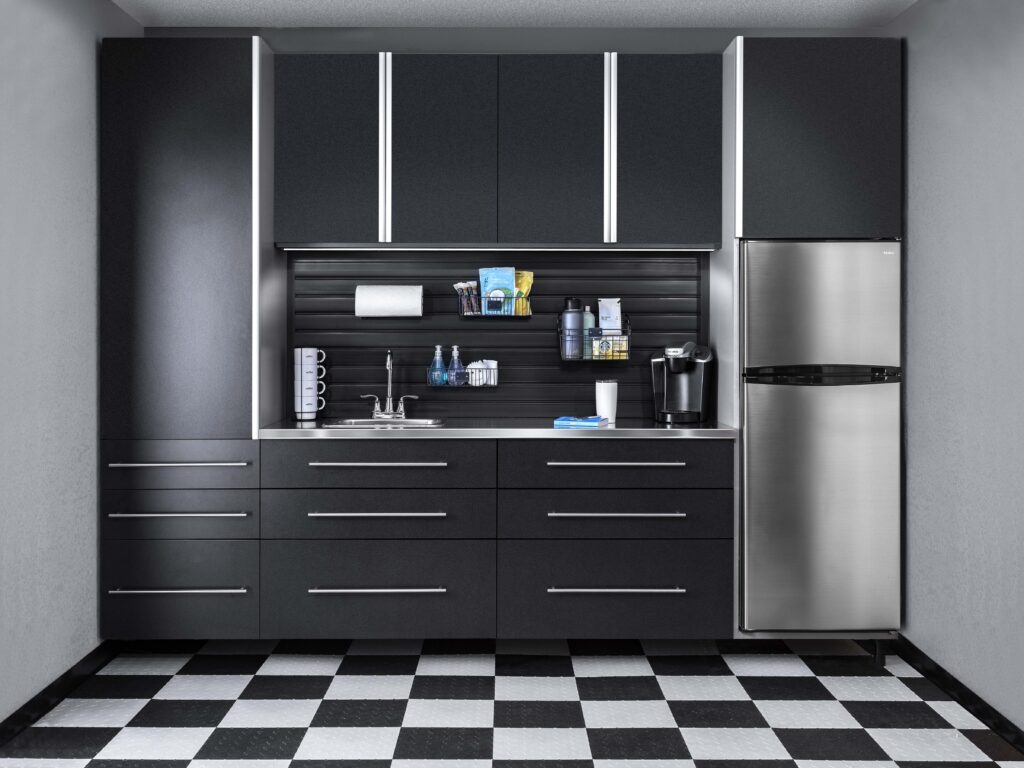How to Design a Garage Closet That Fits Your Tools and Lifestyle

If your garage looks more like a storage unit than a workspace, you are not alone. Many Ottawa homeowners struggle to keep tools, sports gear, and seasonal items organized. A custom garage closet system can completely change that. It turns clutter into order and helps you use every inch of space efficiently.
Here is how to plan, design, and build a garage closet that truly fits your tools, hobbies, and lifestyle.
1. Start by Defining How You Use Your Garage
Before designing your storage, think about how you actually use your garage. Is it mainly a workshop, a car space, or an all-purpose storage zone?
- For tool-heavy users: Focus on cabinet depth, durable shelving, and drawers that can handle weight.
- For family storage: You need sections for seasonal gear, bins, and bulk items.
- For hobbyists or DIYers: Consider a built-in workbench with wall-mounted storage above.
Understanding your needs ensures your garage closet design is not just functional but personal to your daily life.
2. Measure and Plan the Layout
Accurate measurements make all the difference. Measure your wall height, garage door clearance, and vehicle space before deciding on cabinet placement.
A professional designer can create a layout that maximizes space while keeping it safe and easy to move around. In Ottawa’s climate, planning for insulation and temperature changes also matters, especially if you keep tools or paints in the garage.
Tip: Keep at least 36 inches of clearance between storage and your vehicle for easy access.
3. Choose Durable and Weather-Resistant Materials
Garage closets face more wear and tear than indoor storage. The temperature, moisture, and dust in an Ottawa garage can damage poor-quality materials fast.
Look for:
- Powder-coated steel or heavy-duty melamine for cabinets
- Moisture-resistant shelving for longevity
- Full-extension drawers that can handle weight
- Adjustable shelves so you can reconfigure space anytime
Avoid particleboard or untreated wood since it can warp or chip in damp or cold environments.
4. Plan Smart Storage Zones
Every well-designed garage closet system has clear zones. This helps keep your setup intuitive and easy to maintain.
- Tool Zone: Install drawers with dividers for hand tools, wall hooks for power tools, and pegboards for accessories.
- Sports and Outdoor Zone: Use tall cabinets with adjustable shelves for bikes, skates, and helmets.
- Seasonal Storage: Overhead shelves or tall cabinets are great for winter tires, holiday decor, and camping gear.
- Cleaning and Maintenance Zone: Store paint cans, car wash products, and garden supplies together in ventilated sections.
Label your bins or cabinet doors to save time later when looking for specific tools or items.
5. Add Practical Features for Everyday Use
Small upgrades can make a big difference in how your garage functions.
- Soft-close drawers prevent slamming and wear.
- LED lighting strips under cabinets make it easier to find items.
- Magnetic tool bars keep essentials visible and easy to grab.
- Pull-out work surfaces offer a quick area for repairs or crafts.
Design your system to make routine tasks simpler, not more complicated.
6. Keep Safety in Mind
Safety is often overlooked when planning garage closets. Tools, chemicals, and electrical items need secure storage.
- Install locking cabinets for sharp tools or hazardous materials.
- Keep heavy items at waist level to prevent injury.
- Avoid storing flammable liquids near heat sources.
- Add anti-tip brackets for tall cabinets, especially if kids are around.
A custom design makes it easier to keep your garage both organized and safe.
7. Style Matters Too
Function is key, but aesthetics count. A visually clean garage motivates you to keep it that way.
Modern garage closet systems can match your home’s design with finishes like matte gray, white, or woodgrain textures. Add brushed metal handles or glass inserts for a polished look. If your garage is part of your workshop or gym area, a cohesive design makes the whole space feel intentional.
8. Consider Future Needs
A smart garage closet design grows with you. Plan flexible layouts that can adapt as your lifestyle changes.
For example:
- Add adjustable shelving for future tools.
- Leave room for more bins or wall panels.
- Install modular systems that can be expanded over time.
Investing in adaptability now will save you from a full redesign later.
9. Hire a Local Expert for Custom Design
While DIY systems are available, nothing beats a custom design tailored to your exact garage layout. A professional Ottawa designer can assess your space, recommend materials that handle Canadian winters, and create 3D renderings before installation.
They also know how to handle common challenges like uneven walls or tight spaces, ensuring everything fits perfectly and safely.
10. Maintain and Re-Evaluate Your Setup
Even the best garage closets need occasional upkeep. Schedule a quick review every season.
- Remove items you no longer use.
- Clean drawers and shelves to prevent dust buildup.
- Reorganize tools or bins based on what you use most often.
A well-maintained garage closet saves time and keeps your space efficient year-round.
Final Thoughts
Designing a garage closet that fits your tools and lifestyle is not about stuffing everything into a cabinet. It is about creating a layout that works with how you live, work, and store.
By combining smart planning, durable materials, and custom design, you can transform your garage into a clean, functional space that actually supports your routine.
Ready to start designing your custom garage closet? Let Ottawa Custom Closet Solutions help you plan a storage system built for your tools, your home, and your lifestyle.
💬 Book your free design consultation today at www.ottawaccs.com